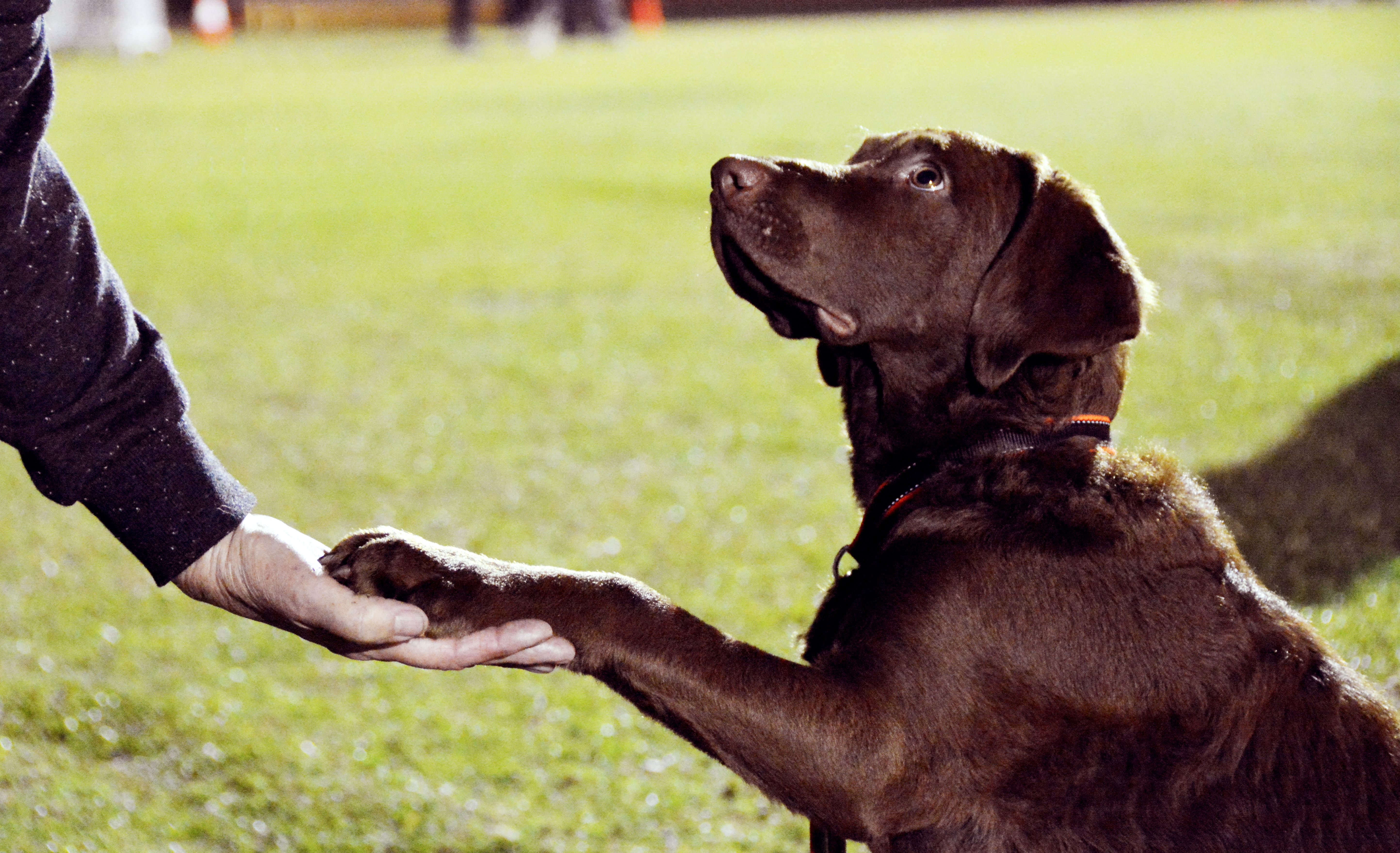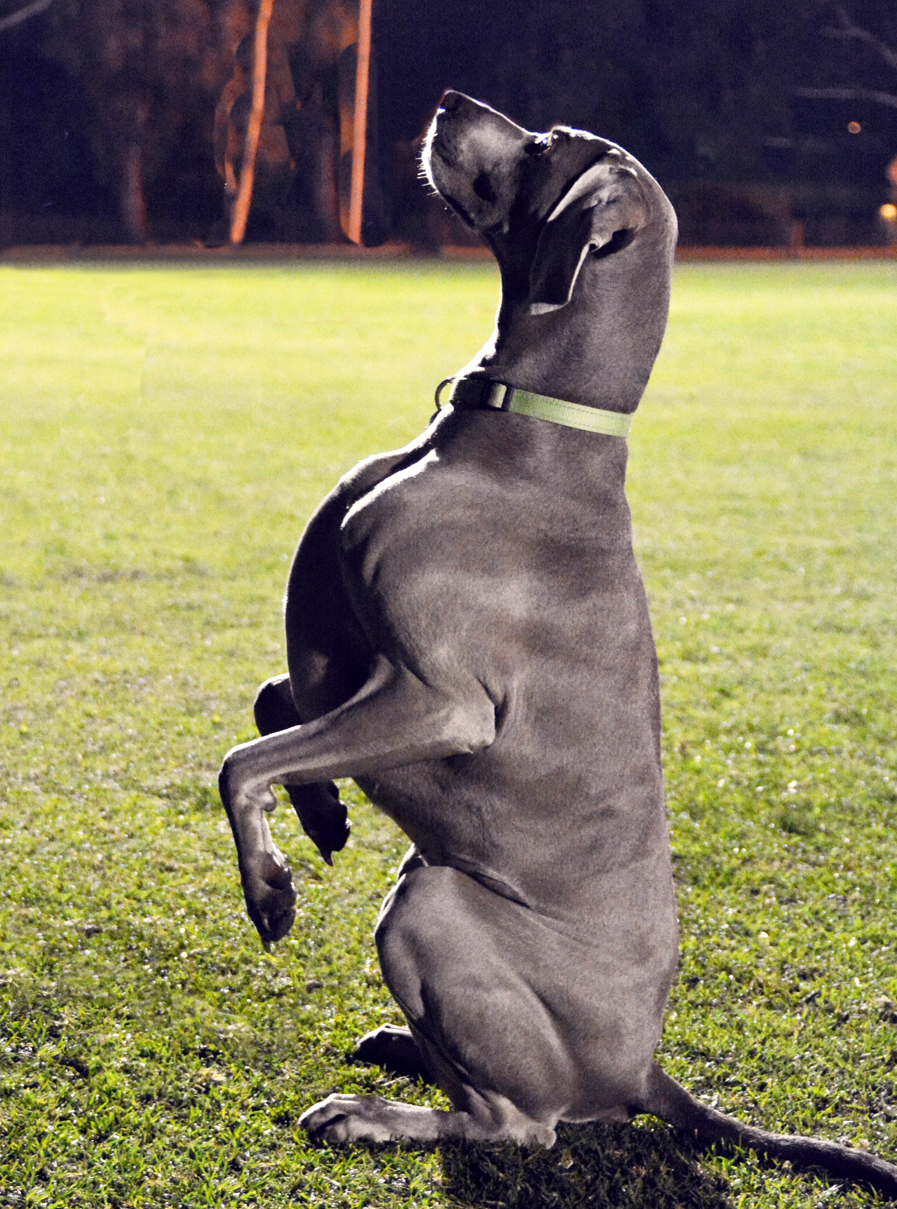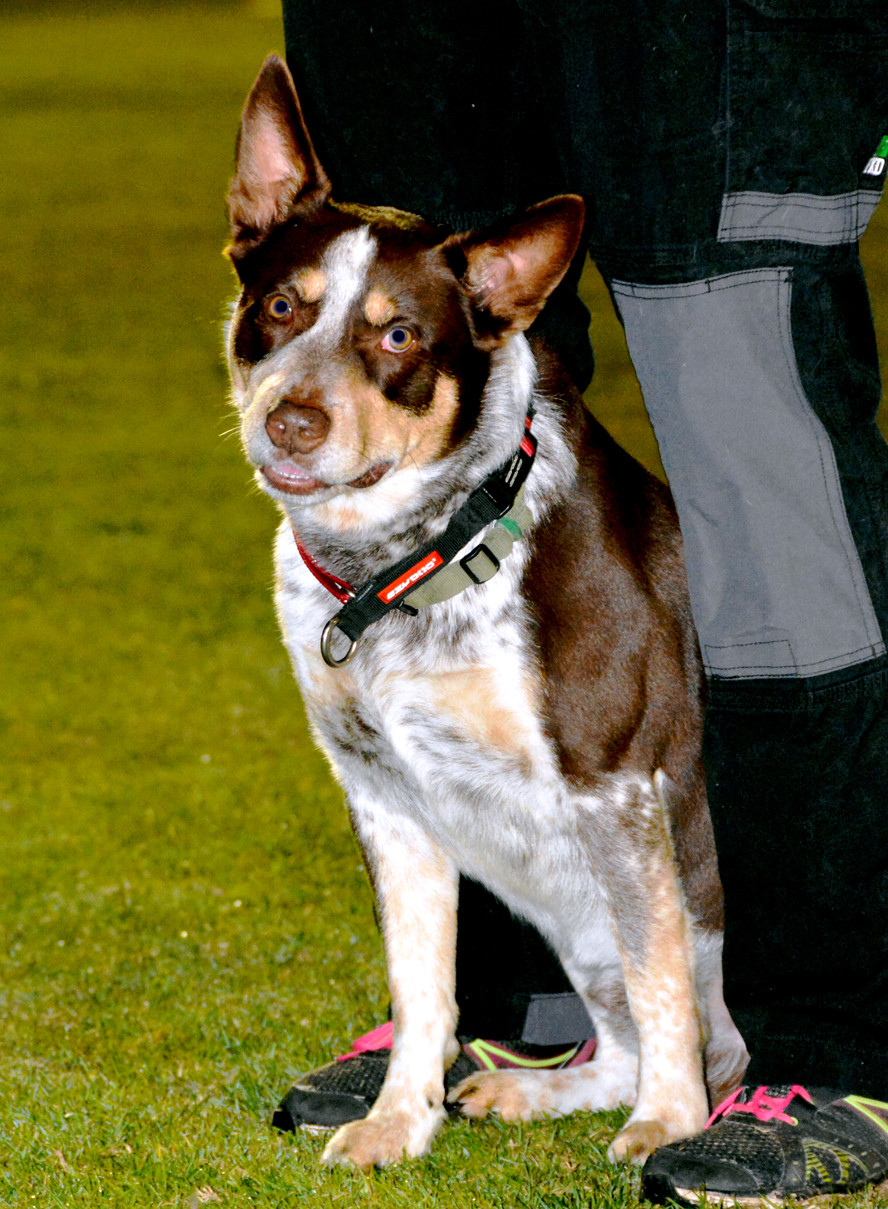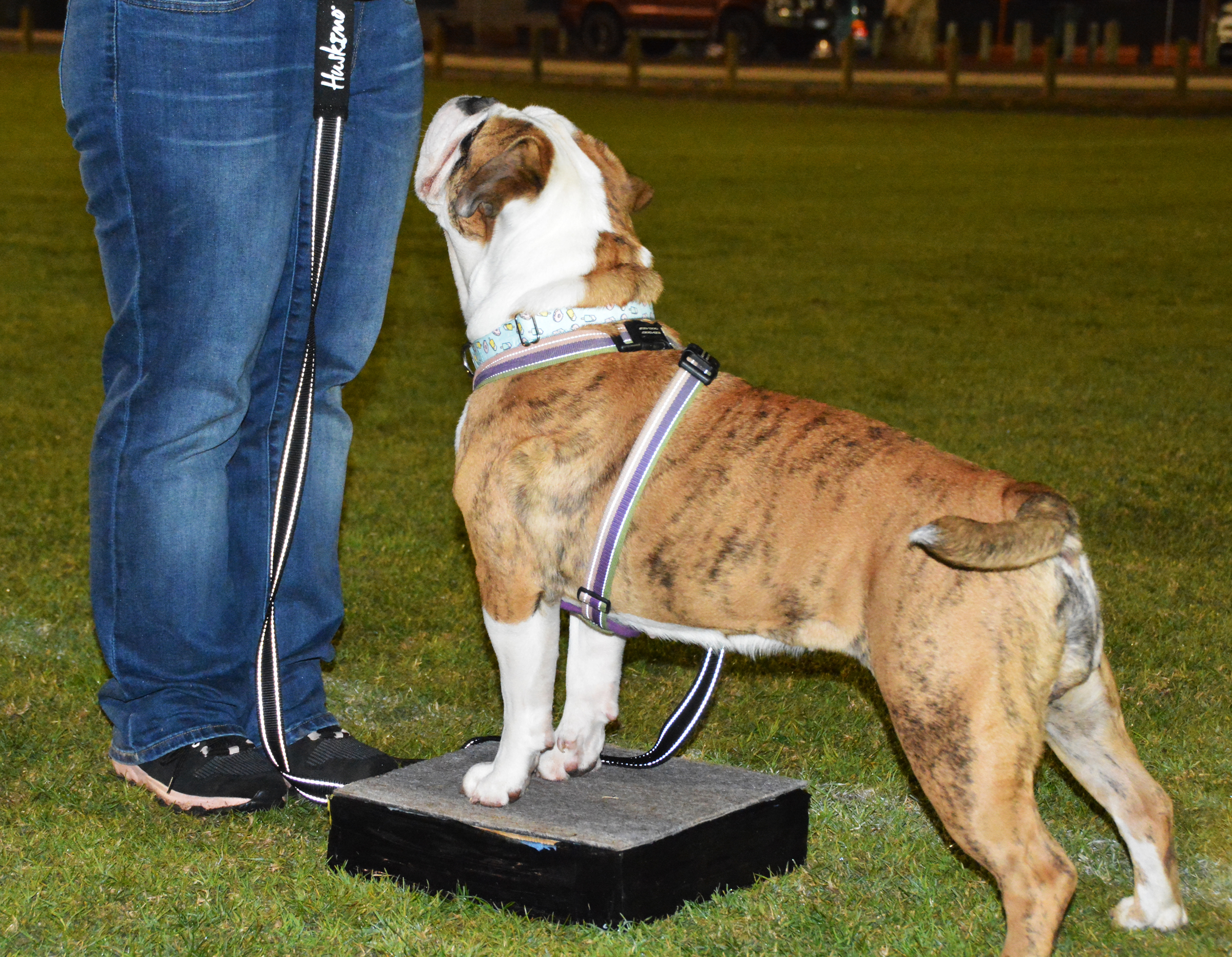STARTER / NOVICE TRICK DOG TRAINING 2024
| TERM 1 | TERM 2 | TERM 3 | TERM 4 |
|---|---|---|---|
|
February 7 March 6 |
TBA |
TBA |
TBA |
INTERMEDIATE / ADVANCED TRICK DOG TRAINING 2024
| TERM 1 | TERM 2 | TERM 3 | TERM 4 |
|---|---|---|---|
|
February 21 March 20 |
TBA |
TBA
|
TBA
|
On 1 st January 2020 a new competition will be available to members of the Canine Association, this is Trick Titles Test. The first test is the Starter test and in this there are 15 tricks to choose from, the handler picks 6 tricks and these are the ones to be used in the test.
The great thing is that in the ring there is a table/chair on which the handler can place six pieces of food in a closed container and if they wish can go to the treat table take a treat out and reward their dog a successful trick. For those who prefer to use a toy as a reward then that is also allowed but it must be a quiet toy.
There are classes at our club to introduce you to this innovative sport make sure you ask your instructor about them. All the tricks are performed off lead, though many can be trained on lead, so no need to wait – just jump in and enjoy yourselves.

Set up
The dog will be in a stance of the handler’s choice and close to the handler.
Cue
The handler will cue the dog to circle him.
Action
On cue the dog will make one complete circle forward around the handler, and finish in the
same position as at the start of the trick.
Set up
The dog will be in a stance of the handler’s choice and close to the handler.
Cue
The handler will cue the dog to circle him.
Action
On cue the dog will make one complete circle forward around the handler, and finish in the
same position as at the start of the trick.
Set up
The dog will be in a stance of the handler’s choice and close to the handler.
Cue
The handler will cue the dog to circle spin.
Action
On cue the dog will complete one circle spin away from the handler and return to the start position. The dog may spin in a clockwise or anti-clockwise direction. The handler may be stationary or moving as the dog does the circle spin.
Set up
The dog will be in a stance of the handler’s choice and may be on the left or right side of the handler.
Cue
The handler will have their legs apart and the handler’s feet will remain stationary until the dog has returned to the start position. The handler will cue the dog to weave through his/her legs.
Action
On cue the dog will weave through the handler’s legs, making one (1) figure eight around the handler’s legs, then return to the start position.
Set up
The dog will be in the stand position. The handler will be in front of the dog.
Cue
The handler will cue the dog to touch each hand in turn. The handler will present his left hand to his left front and his right hand to his right front and away from his body, once only for each hand. Hands may be presented in any order.
Action
On cue the dog will touch the handler’s left and right hand respectively with his nose, when that hand is presented and maintain contact on each hand for two (2) seconds. The Judge will indicate when that time has elapsed. The dog must clearly move to target each presented hand; the handler may not move their hand to the dog. The actual nose to hand touches must be clearly visible to the judge.
Set up
The dog may be on the left or right side of the handler. The handler must use a target stick or cane which is at least as long as the dog’s body length.
Cue
The handler will hold the target stick out in front of the dog and may also use a verbal cue.
Action
On cue the dog will move and follow the target stick as the handler –
(a) turns in a full 360 degree turn; or
(b) moves forward at least two (2) body lengths.
The dog will move at a distance from the handler, with focus on the end of the target stick. The dog should not jump up at the target stick.
Set up
The handler will provide a step or perch/box that must have a non-slip surface and be of a suitable size for the dog and provide distinct elevation, relative to the size of the dog. The dog will be in a stance of the handler’s choice and may be with the handler or left in a stay adjacent to the perch/step. The handler will remain at least one (1) metre from the perch/step throughout the trick.
Cue
The handler will cue the dog to put his front feet only on the perch/step.
Action
On cue the dog will move to and place his front feet on the perch/step and hold that position for five (5) seconds. The Judge will indicate when that time has elapsed.
Set up
The dog will be in a sit or stand position. The handler will be directly in front of the dog and handler may sit, stand or kneel and may bend over.
Cue
The handler will present their open palm and cue the dog to lift his left or right paw and place it on the handler’s open palm.
Action
On cue the dog will lift the paw as cued by the handler and place it in the handler’s open palm and maintain contact for at least two (2) seconds. The Judge will indicate when that time has elapsed. The handler may not push their hand under the dog’s paw or hold on to the dog’s paw.
Set up
The dog will be in a stand in front of and facing the handler. There will be a distance of at least 0.5 m between the dog and the handler and the handler must not crowd the dog.
Cue
The handler will cue the dog to back up.
Action
On cue the dog will back up at least one (1) body length. The handler will remain stationary but may take a step forward to initiate the movement; however, this step must not encroach on the minimum distance of 0.5 m from the dog which must be maintained throughout the trick.
Set up
The handler will provide a jump (which may be a bar jump or a solid jump and must be safe for the dog to jump) with a minimum height of 150mm and of a maximum height of 400mm. The height which the dog jumps should be suitable for the dog’s abilities. The handler and dog will stand at least one (1) metre (on either side) from the jump with the dog in a stance of the handler’s choice and beside the handler on either left or right side.
The handler may –
(a) remain at the start point and send the dog over the jump; or
(b) run past the jump with the dog, to encourage him to jump; or
(c) leave the dog and move to stand at the side of the jump and send the dog over; or
(d) move to the opposite side of the jump and stand at least one (1) metre away from the jump.
Cue
The handler will cue the dog to take the jump. The handler is not required to inform the Judge which option he will be using. The handler may take a step forward to send the dog but this step must not encroach on the minimum distance of one (1) metre from the jump.
Action
On cue the dog will jump over the jump, land on the other side and return close to the handler.
The dog will be in a stance of the handler’s choice (stand preferred). The dog may be in front of or beside the handler.
Cue
The handler will cue the dog to take a bow; the handler may bend over to cue the dog. The handler may take a step forward to command the dog to bow and/or maintain their pose for the duration of the trick.
Action
On cue the dog will take up the position of a bow, with his elbows lowered towards the ground whilst his hindquarters remain elevated. The dog must hold the position for two (2) seconds. The Judge will indicate when that time has elapsed.
Set up
The handler will provide an object to create a defined area* . The defined area must have a non-slip surface and must be large enough for the dog to be able to stand and turn and face the handler while remaining substantially in or on the defined area. The handler will place the object creating the area and take up a position at least two (2) metres in front of the area. The dog will be in a stance of the handler’s choice and will be beside the handler.
Cue
The handler will cue the dog to go to the defined area. The handler will remain stationary but may take a step forward to send the dog; however, this step must not encroach on the minimum distance of two (2) metres from the defined area.
Action
On cue the dog will go to the defined area, turn and face the handler; the dog can then stand, sit or drop, but in doing so must remain in the defined area.
*This may include a mat, box, suitcase, hula hoop, laundry basket, baby bath or other low sided barrier or object which clearly marks the perimeter of the area.
Set up
The dog may be in any position other than straddle and, if behind the handler, will be at least one (1) body length away.
Cue
The handler will cue the dog to wait while he takes up position and moves his legs apart to form an inverted ‘V’. The handler will further cue the dog to move into straddle position.
Action
On cue, the dog will take up position with his shoulder/chest between the handler’s legs, and facing the same direction as the handler. The dog will maintain this position for two (2) seconds. The Judge will indicate when that time has elapsed.
Set up
The handler will provide a retrieve object (which may be a toy). The dog will be in a stance of the handler’s choice and may be directly in front of the handler or beside the handler.
Cue
The handler will cue the dog to take the object and hold it.
Action
On cue the dog will take the object and hold it, without mouthing it, for two (2) seconds; the time starts once the dog has taken the article from the handler. The Judge will indicate when that time has elapsed.
Set up
The dog will be in a stance and position of the handler’s choice.
Cue
The handler will cue the dog to Sit Pretty.
Action
On cue the dog will sit securely balanced on his hindquarters and will –
(a) raise his front paws in the air, without support; or
(b) raise his front paws onto the arm of the handler.
In either case the dog will hold the position for two (2) seconds. The Judge will indicate when that time has elapsed.




